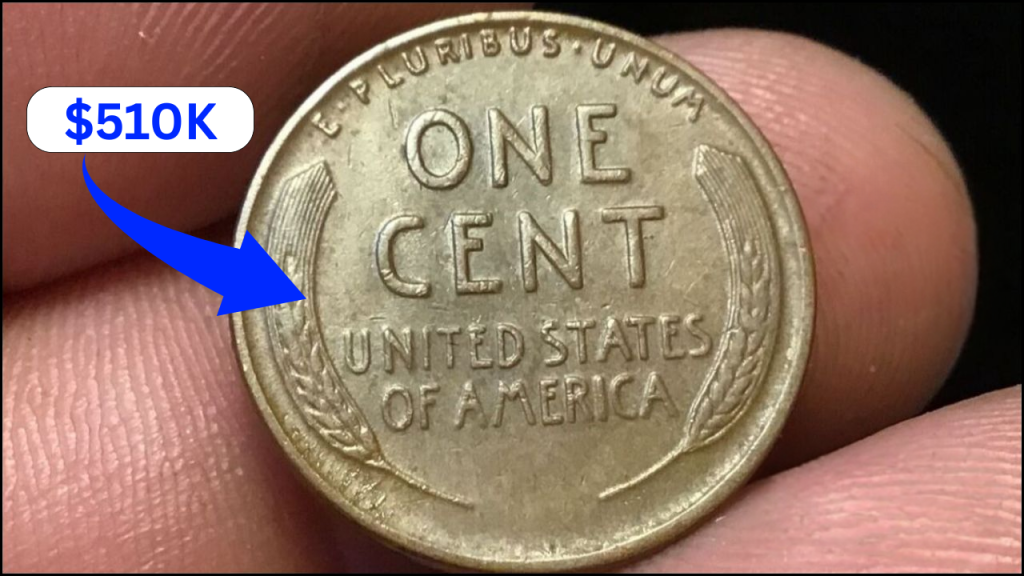
When you think of valuable treasures, a penny probably isn’t the first thing that comes to mind. But believe it or not, a small copper coin that most of us barely notice could be worth a life-changing amount of money. We’re talking about the Lincoln Wheat Penny—a humble piece of change that, in rare cases, has sold for as much as $510,000. And the craziest part? Some of these coins might still be floating around in regular circulation.
A Little Coin With a Big History
The Lincoln Wheat Penny first appeared in 1909, created to celebrate the 100th birthday of President Abraham Lincoln. This was a big deal because it was the first U.S. coin to feature a real person—before that, coins had mostly symbolic figures like Lady Liberty.
The man behind the design was artist Victor David Brenner. On one side, he put Lincoln’s profile. On the other, he added two stalks of wheat, which is how it got the nickname “Wheat Penny.”
From 1909 to 1958, this design was used across the U.S., making it a common sight for decades. But within those millions of coins, a few rare versions were minted that collectors today will pay a small fortune to get their hands on.
The 1943 Copper Penny: A Lucky Mistake Worth $510,000
The most famous Lincoln Wheat Penny by far is the 1943 copper penny. Here’s the story behind it.
During World War II, copper was needed for the war effort to make bullets, shells, and other equipment. So in 1943, the U.S. Mint decided to make pennies out of steel coated with zinc, which gave them a silver-like look.
But by accident, a few copper blanks from 1942 were left in the machines. When the Mint started pressing the new 1943 pennies, some of those leftover copper pieces were used, creating a super rare error coin.
Only about 20 of these copper 1943 pennies are known to exist. And because of their rarity and fascinating backstory, one in excellent condition has sold for up to $510,000.
How to Tell If You Have One
Most 1943 pennies are steel and will stick to a magnet. If you’ve got a 1943 penny that looks copper and doesn’t stick to a magnet, don’t spend it—get it checked! You might just be holding a six-figure treasure.
Other Rare and Valuable Lincoln Wheat Pennies
While the 1943 copper penny gets most of the attention, other Wheat Pennies are also worth serious money. Here are a few to look out for:
1. 1909-S VDB
This one was made in San Francisco, and it has the designer’s initials, “VDB,” on the back. Some people thought the initials were too big and flashy, so production was stopped early. Only 484,000 of these were made, making them one of the most desired Lincoln cents. Depending on the condition, they can sell for tens of thousands of dollars.
2. 1914-D
This penny was minted in Denver and is very hard to find in good shape today. High-quality versions can fetch several thousand dollars from collectors.
3. 1922 “Plain” Penny
This one’s interesting—it’s missing the mint mark. All 1922 pennies were made in Denver, but a few came out without the “D” below the date. These rare no-mark coins are worth a pretty penny to the right buyer.
4. 1955 Double Die
This coin has a clear “doubling” effect on the letters and numbers on the front. It’s easy to spot, and it’s highly collectible. Depending on the condition, it can sell for thousands.
How to Check If Your Penny Is Valuable
Think you might have a hidden gem in your change jar? Here are a few simple things to check:
- The Year: Start by looking at the date. Key years include 1909, 1914, 1922, 1931, 1943, and 1955.
- The Material: For 1943 coins, test with a magnet. Steel pennies stick—copper ones don’t.
- The Mint Mark: Look just below the date. “S” means San Francisco, “D” is Denver, and no letter means it was minted in Philadelphia.
- The Design: On some coins, like the 1955 Double Die, the text may look blurry or doubled.
If anything looks unusual or matches the rare versions above, it’s worth taking a closer look.
Don’t Clean It!
One important tip: Never clean a rare penny. It might be tempting to scrub it up to make it shiny, but that can lower its value. Collectors want coins in their natural, aged condition. Even a dirty or discolored coin can be worth more than a cleaned one.
Instead, handle it by the edges and store it safely—ideally in a coin sleeve or plastic case.
Get It Checked by an Expert
If you think you’ve found something special, take it to a professional for grading and authentication. They’ll tell you exactly what you have, how rare it is, and what it might be worth. They can also seal it in a tamper-proof case for protection.
Why This Still Matters Today
You might be wondering, “Aren’t all the rare coins long gone?” Surprisingly, no! Many of these valuable Wheat Pennies are still out there. Some people don’t know what they have. Others passed them down through generations, forgotten in old coin jars, piggy banks, or sock drawers.
That’s what makes coin collecting so exciting. There’s always a chance, however small, that you could stumble upon a hidden treasure.
A Hobby That Pays Off
Coin collecting isn’t just about money—it’s about history, curiosity, and the thrill of the hunt. It’s something anyone can start with little effort. All you need is some spare change and a bit of knowledge.
And who knows? The next time you pay in cash and get a few pennies back, one of them might be worth more than your entire wallet.
Final Thoughts
The Lincoln Wheat Penny is a small piece of metal with a huge story. From a tribute to a beloved president to an accidental wartime error worth half a million dollars, it proves that even the simplest things can hold great value.
So next time you’re about to toss a penny into a tip jar or leave it on the sidewalk, take a closer look. That ordinary-looking coin might be your ticket to something extraordinary.


